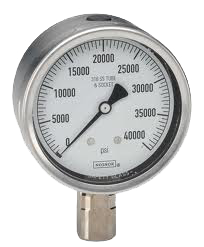High Pressure Coolant Delivery Systems for CNC Machines
 Among the technology trends discussed at IMTS 2012 is the growing necessity for high-pressure coolant delivery to enable CNC machine tools to efficiently tackle difficult-to-machine materials such as titanium and various exotic alloys. Manufacturers spend millions of dollars on liquid coolants each year. In many cases the benefit of this coolant could be greatly enhanced – in some applications by 100% or more – by using a high-pressure coolant delivery system.
Among the technology trends discussed at IMTS 2012 is the growing necessity for high-pressure coolant delivery to enable CNC machine tools to efficiently tackle difficult-to-machine materials such as titanium and various exotic alloys. Manufacturers spend millions of dollars on liquid coolants each year. In many cases the benefit of this coolant could be greatly enhanced – in some applications by 100% or more – by using a high-pressure coolant delivery system.
Coolants, of course, are used to reduce the amount of heat and friction at the cutting point, and that allows the machine tool to operate at higher speeds and reduces tool wear. However if the pressure and fluid direction isn’t precise, the coolant simply washes over the tool, tool holder and workpiece. While this cools the surfaces somewhat, it fails to remove the intense heat within the cutting area, itself.
Directing the coolant stream more accurately and with the optimum amount of pressure removes much more heat from the cutting zone. This degree of cooling also enables the cutting tool to remove greater amounts of metal, thus improving machine tool cycle times. Additionally, the high-pressure coolant stream helps break up troublesome chips including stringy chips or bird’s nests, and more efficiently removes them from the cutting area. This means the cutting tool spends less time re-cutting metal chips. The combination of reduced heat and more efficient evacuation of chips prolongs tool life and makes cutting tool replacement more predictable because they wear naturally, rather than failing prematurely due to excessive heat or chip damage.
A good example of the need for precise, high-pressure coolant delivery is the machining of no-lead brass, currently required in several states for parts that convey potable water, and soon to be required nationally. For those manufacturers who have been exclusively machining brass containing lead, the challenge is dealing with both the increase in friction-produced heat in the cutting area and the presence of harder, stringier chips. In many cases this requires high-pressure coolant delivered at 40 to 75 bar to reduce heat, break up chips, help maintain surface finish, and aid in chip disposal. Manufacturers who plan to machine both traditional and no-lead brass will require different degrees of high-pressure coolant for various parts. New, programmable, high-pressure coolant systems that provide variable pressures are helpful when switching between various types of materials.
Gosiger applications engineers can help you determine if a high-pressure coolant system can help you be more productive and profitable. Call today to learn more.
 |